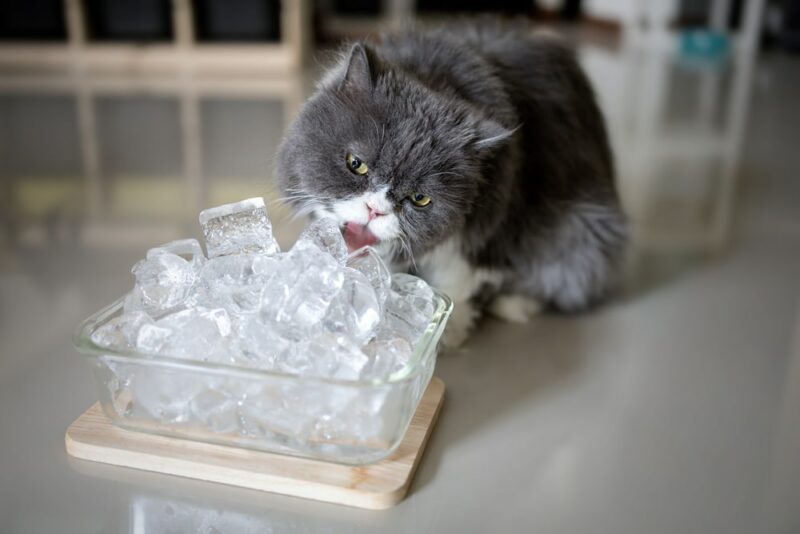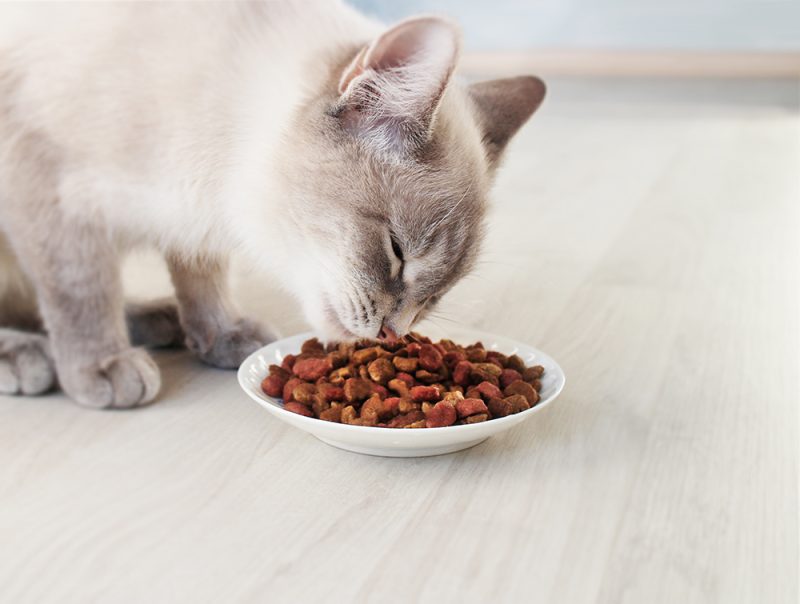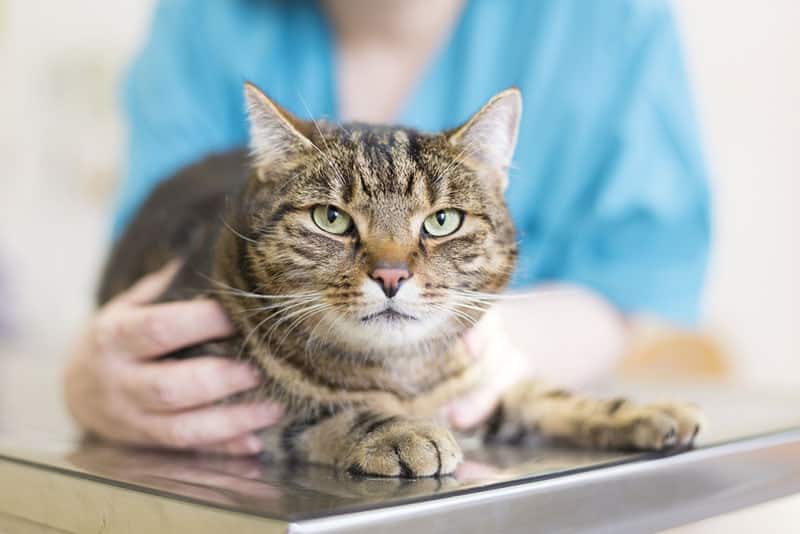Keeping our pets healthy is of vital importance, and sometimes, we need to step outside our comfort zones to provide our pets with the treatment that they need. One example of this is giving subcutaneous, or Sub-Q, fluids. These are fluids that you or a veterinarian inject under the cat’s skin to hydrate them or administer medication.
Since it is impossible to force a cat to drink water, applying subcutaneous fluids is the best option for many cats. Subcutaneous fluids are a great way to help rehydrate a cat because the fluids will slowly reabsorb, guaranteeing that a cat gets or recovers the hydration they need. While some pet parents might feel a little uneasy about applying subcutaneous fluids to their cat themselves, it might be necessary in certain situations. For example, it may be necessary in cats with chronic kidney disease, especially if there is no access to a veterinarian nearby or if frequent vet bills are overly expensive.
If this is your case, know that although this technique includes a needle, most cats eventually learn to accept it. The more you practice, the more confidence you will develop in performing it. Keep in mind that you should only do this if instructed by a veterinarian and following their frequency and quantity recommendations.
If you need to give sub-Q fluids to your cat (with a vet’s guidance), keep reading for a step-by-step guide to the process so you can do it at home.

Before You Get Started
Know that this medical procedure should only be performed if it was instructed by a vet. The information provided here is merely informational and is not a substitute for veterinary prescription. Each cat and each case is different, so a veterinarian should be the one deciding if your cat needs subcutaneous fluids as well as the quantity and frequency recommended for each case.
A vet will likely provide all the tools and consumables that you need, though you can also find replacements in a pharmacy or online. You will need a bag of sterile IV fluids (as instructed by a veterinarian, since several different kinds exist in the market), a needle, and a drip set (the tubing mechanism that takes the fluid from the bag to the needle). In some cases, you may want to warm the fluids slightly by placing the bag (while still inside the second sealing bag) in a bowl of warm water for a few minutes. Be careful to keep the giving/insertion port of the fluid bag outside the water bowl. The idea is just to make it lukewarm so your cat is less uncomfortable. Keep in mind that whenever liquids are applied, they should be at room temperature or body temperature. If a liquid is warmer than that, you could end up burning your cat, so only warm it if necessary. Many people also like to hang the fluid bag instead of holding it to make the process easier. You do not need any sophisticated equipment for this, just a higher place to hang the bag. Choose a place where you and your cat can be comfortable for the procedure.
Please remember to practice hygiene while handling the equipment to prevent any complications. Getting used to double-checking the physical state and expiry date of the fluids and consumables is a great habit. If the fluid inside the bag looks cloudy or is a different color than usual, do not use it.
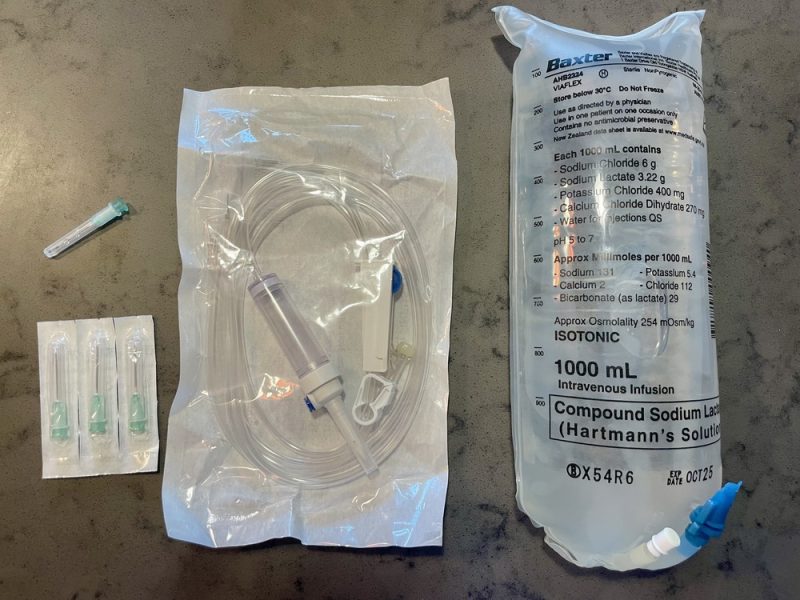

The 9 Steps for Giving Subcutaneous Fluids to a Cat
1. Set Up the Fluid Drip Set
- Remove the fluid bag and drip set tubing from the packaging, and close the line lock in the center of the tubing by moving the roller until it squeezes the tube.
- Hang the fluid bag in the designated place to leave your hands free and allow gravity to do the work.
- Remove the cap covering the pointed end at the top of the drip set tubing. Then, pull the protective covering from the bottom of the fluid bag to expose a hole. This should be kept sterile, so do not allow either of the parts to make contact with any surface, including your hands.
- Push the pointed end of the drip set into the exposed hole in the fluid bag.
- Squeeze and release the bulb at the top of the drip set to fill the bulb chamber about halfway.
- Remove the protective cover from the bottom of the drip set, but don’t discard it. Again, be careful not to allow the sterile parts to make contact with any surface. Place it carefully over a clean area without allowing contact between the opening and the surface.
- Open the line lock and suspend the fluid bag, which should cause the fluid to flow freely and begin filling the tube. Once full and free of air bubbles, lock the line again to stop the flow of liquid and replace the cap.
- Open the protective wrapping around the needle, exposing the open end opposite the sharp end. Remove the cap again from the lower end of the drip set, place the open end of the needle on it, and press it in firmly. You should be able to feel the needle piece clicking in. Some models need to be screwed in, and if possible, we recommend this kind, as the attachment is more secure.
2. Set Up a Comfortable Space
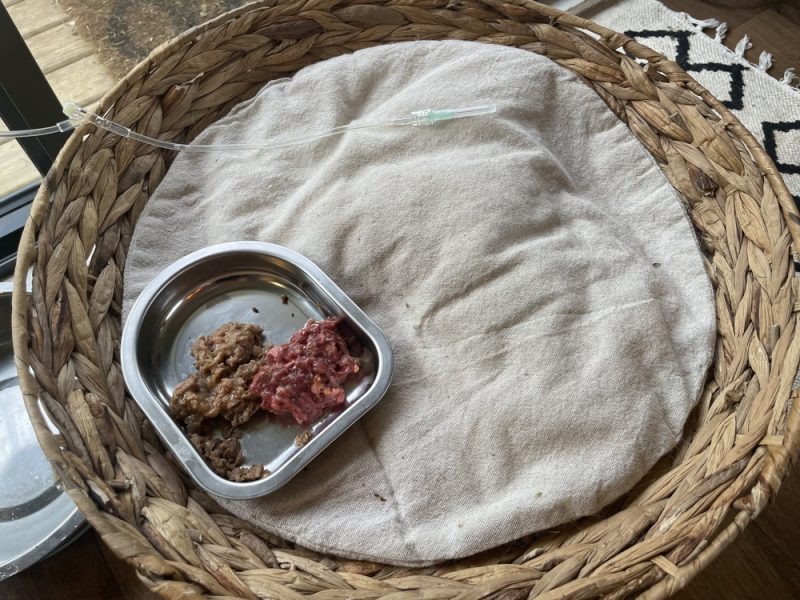
Choose a quiet and comfortable area where you and your cat can relax, away from heavy foot traffic, loud noise, distractions, and other pets. Some people like to have a helper during the process, so one person can hold the cat while the other administers the needle and manipulates the drip set, which is a good idea, especially if you’re worried about your pet staying calm.
3. Position Your Cat
Place your cat in your lap or on a comfortable surface for the procedure. If your cat doesn’t like to sit still, it can be helpful to wrap them in a towel lightly, leaving only the head and upper back exposed.
4. Choose the Injection Site

The best place for a sub-Q injection is between the shoulder blades, where the skin is extremely loose. Clean the injection site with a cotton ball and rubbing alcohol and allow it to dry. At this point, your assistant can offer the kitty lickable treats as a distraction. The cat needs to remain in place.
5. Insert the Needle
Use your second hand to pinch the skin at the injection site to form a tent. Carefully remove the needle cap, ensuring that you do not pinch yourself and the needle does not touch any surface. With the needle at a slight angle and the hole facing up, quickly insert it into the base of the tented skin area. Ensure that the needle is under the skin but is not poking through to the other side or out of the “tent.”
6. Start Administering the Fluids
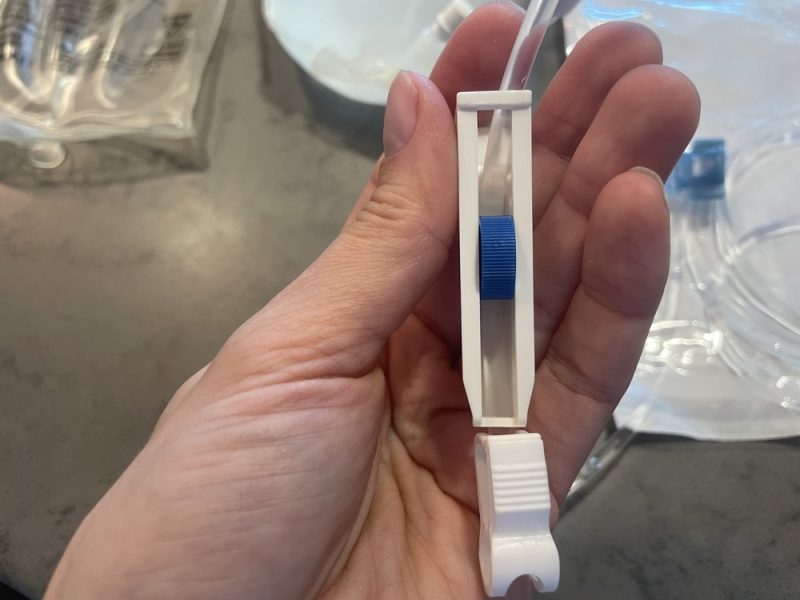
Open the roller clamp to enable the fluids to flow, and adjust the flow rate. Monitor the fluid bag closely, and use the roller clamp to turn off the flow when you administer the appropriate amount as recommended by a vet.
7. Finish and Reward Your Cat
Remove the needle from your cat’s skin, and gently press the injection site with your finger for a few seconds. Please ensure that you place the cap back on the needle to prevent accidents. If you haven’t already had an assistant giving treats during the procedure, this is the next best time to give your cat a treat and praise to help reduce the risk of them seeing it as a bad experience.
8. Dispose of the Needle Safely
Place the used needle in a sharps container for proper disposal. Never reuse needles. If you still have fluid in the bag, it is safe to reuse it, but you should immediately replace the used needle with a new, sterile one and keep the bag in a safe, clean place.
9. Monitor Your Cat
Watch for any adverse reactions after administering the fluids, like excessive leaking from the injection site, signs of infection, or discomfort, and contact a vet if you notice anything unusual.
If you need to speak with a vet but can't get to one, head over to PangoVet. It's an online service where you can talk to a vet online and get the advice you need for your pet — all at an affordable price!


Frequently Asked Questions
What Are Sub-Q Fluids Used For in Cats?
Sub-Q fluids help treat dehydration in cats. They are a common treatment recommended for cats with chronic kidney disease. In some cases, vets might also use them to administer medication.
How Often Do I Need to Give My Cat Sub-Q Fluids?
The frequency of sub-Q fluid administration will depend on the specific health needs of your pet and a veterinarian’s advice. It usually ranges from daily to once a week, with two to three times per week being the most common practice.
Will Administering Sub-Q Fluids Hurt My Cat?
Inserting the needle may cause a brief moment of discomfort, but cats are usually not too bothered by it, and the fluid does not seem to cause any pain. Using sharp needles and proper technique will help reduce the likelihood of hurting your pet.
Can I Give Sub-Q Fluids to My Cat at Home?
In most areas, pet owners can safely administer sub-Q fluids at home with proper instruction and guidance from a veterinarian. However, in some countries, only vet or vet techs can administer sub-Q fluids.
Are There Any Risks Associated With Sub-Q Fluid Administration?
The main risks associated with sub-Q fluids are infection at the injection site, incorrect administration of fluids, and needle-related injuries. Carefully following your doctor’s advice is vital to ensure that your pet is getting the right amount of fluids. If you notice that the site of injection is warm, swollen, or hard and painful, please have the vet check your cat as they might be developing an infection, although this is rare if proper hygiene and technique are practiced.

Summary
While administering sub-Q fluids to your pet can seem intimidating and complex, the process is not that difficult and can even become easy after a few tries. It can be quite beneficial to your pet, helping them stay hydrated, and it’s especially useful for cats with kidney disease who struggle to take in enough water. If you think that your pet is not getting enough fluids, schedule an appointment with a vet to see if this procedure will be a good solution.
Featured Image Credit: Numstocker, Shutterstock




